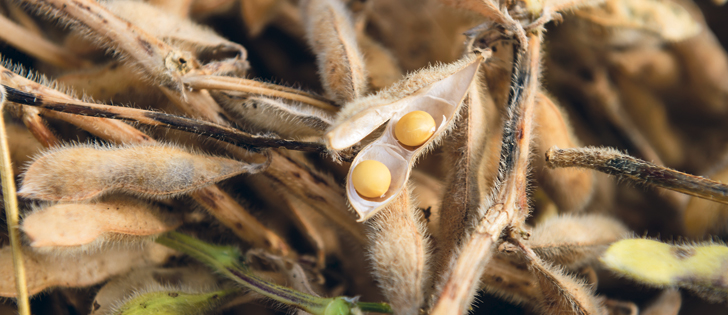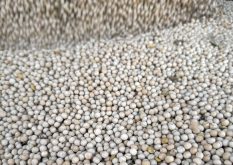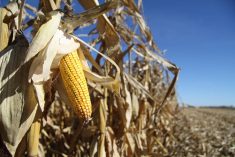The crop year has come to a close, and what a year it was for Canadian grain exports and domestic use.
Records were posted for canola exports and crush.
Another number that stands out is soybean exports.
Once Statistics Canada’s final numbers are tallied, soybean exports this year will likely be about 4.5 million tonnes, up more than nine percent over the previous year and up 18.4 percent from two years ago.
The reason behind the rising exports is the huge increase in soybean production in Western Canada.
Read Also

No special crop fireworks expected
farmers should not expect fireworks in the special crops market due to ample supplies.
Total Canadian seeded area in 2016 was 5.47 million acres, of which 1.88 million were in Western Canada, mostly Manitoba. The western Canadian area last year rose 13 percent, continuing a multi-year string of big increases.
Also, the weather was ideal last year, leading to a record yield for the region of slightly more than 40 bushels per acre.
Without a dedicated processing plant in Manitoba, a lot of the region’s production was exported.
China was the most important destination, taking almost two million tonnes from Canada in the first 11 months of the crop year. European Union countries bought more than a million tonnes and Japan almost 300,000.
In this new crop year, production will likely climb again as national seeded area jumped 33 percent to 7.28 million acres, thanks mostly to a 67 percent increase in Western Canada’s area.
Short season soybeans on the Prairies performed great in the recent wet years. This year’s weather will test the crop’s genetics against dry conditions.
Agriculture Canada’s July forecast, made before the worst of the heat and dryness set in, pegged Canadian 2017-18 soybean production at a little more than eight million tonnes.
It forecasts that exports will jump by more than a million tonnes to 5.8 million.
If attained, that would make Canada the fourth largest soybean seed exporter in the world, climbing past Paraguay.
Our exports still pale compared to Brazil’s forecasted 2017-18 movement of 64 million tonnes and the United States’ 58.5 million.
Argentina is also a major player but its seed exports are forecast at only 8.5 million tonnes because it focuses its export sector on processed products.
It is expected to ship out 32.3 million tonnes of soy meal. Paraguay also exports large amounts of soy meal.
If soybean expansion in Canada proceeds as Soy Canada plans, by 2027 we’ll be seeding 10 million acres to the crop, six million in the West and four in the East, producing 13 million tonnes.
This would put Canada solidly atop the second tier of world soybean exporters, behind the big three of Brazil, the U.S. and Argentina.
Coupled with our world leading position in canola exports, this new surge of soybean exports means Canada can’t be ignored when it comes to global oilseed trade.
Canada might not have the heft of the soybean leaders, nor the palm oil kings Indonesia and Malaysia, but we have a new, more important status.















